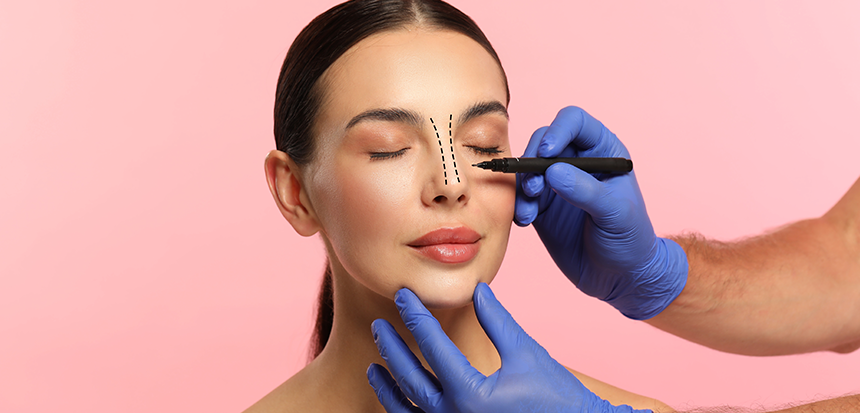
Rhinoplasty, commonly referred to as a "nose job," is a medical procedure that involves surgically or non-surgically altering the shape and appearance of the nose. It can address aesthetic or functional concerns and may include modifications to the size, shape, nasal bridge, tip, or overall symmetry of the nose.
Rhinoplasty can be performed on generally healthy individuals who are dissatisfied with the shape of their nose and wish to enhance their appearance. Those experiencing breathing difficulties due to nasal shape or function may also consider this procedure.
Rhinoplasty is usually performed as a surgical procedure. During surgery, the nasal skin is lifted, and modifications are made to the underlying bone and cartilage tissues to shape or correct them. Non-surgical rhinoplasty options are also available, involving minor adjustments using injectable substances like fillers or Botox.
Like any surgical procedure, rhinoplasty carries risks. Potential risks include infection, bleeding, anesthesia reactions, and undesirable outcomes. However, when performed by an experienced surgeon and with proper patient evaluation and guidance, these risks can be minimized.
Recovery time after rhinoplasty may vary from person to person. Edema and bruising usually decrease within the first few weeks. It may take several months for post-surgical results to be fully visible. The complexity of the procedure, the individual's general health condition, and appropriate post-surgical care may affect recovery time.
After rhinoplasty, patients often experience swelling, bruising, and discomfort for a period of time. It is important to follow post-surgical instructions exactly. Heavy physical activities should be avoided for the first few weeks, care should be taken not to lie face down, and care should be taken as recommended by the doctor.